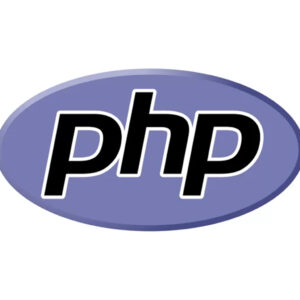
Overview
PHP is a popular server-side scripting language designed for web development and dynamic website creation. It is widely used for building interactive websites, web applications, and content management systems. PHP can be easily embedded within HTML, making it beginner-friendly and flexible. Its open-source nature and broad compatibility make it a preferred choice for web developers worldwide.
Study Mode:
Duration:
Curriculum For:
Batch Seats:
Learning outcomes
- Understand the basic syntax and structure of PHP for web development.
- Create dynamic and interactive web pages using PHP scripts.
- Work with forms, user inputs, and server-side processing in PHP.
- Connect and interact with databases using PHP and MySQL.
- Implement session management and user authentication in web applications.
- Develop complete, functional websites and web applications using PHP.
Career information
PHP offers excellent career opportunities in web development, especially for building dynamic websites and web applications. It is widely used in developing e-commerce platforms, content management systems, and custom web solutions. PHP developers are in demand across startups, IT companies, and digital marketing agencies. With PHP skills, one can pursue roles in backend development, full-stack development, and freelancing.
Career Path
- Web Developer
- Backend Developer
- Full Stack Developer
- WordPress Developer
- Freelance PHP Developer
Program syllabus
PHP Programming Course
| Module 1: Introduction to Web Development & PHP |
|---|
| Basics of Web Development (HTML, CSS, JavaScript Overview) |
| What is PHP? History & Evolution |
| Setting up Development Environment (XAMPP/LAMP/WAMP) |
| Writing First PHP Script |
| PHP Syntax, Variables, Constants |
| Data Types & Operators |
| Module 2: Control Structures & Functions |
|---|
| Conditional Statements (if, else, switch) |
| Looping Structures (for, while, foreach) |
| Defining and Calling Functions |
| Function Scope and Parameters |
| Include & Require Statements |
| Module 3: Arrays & Strings |
|---|
| Indexed, Associative, and Multidimensional Arrays |
| Array Functions (sort, merge, explode, etc.) |
| String Manipulation (concatenation, functions, regex) |
| Array vs Object comparison |
| Module 4: Forms & User Input |
|---|
| Creating Forms (GET vs POST) |
| Handling Form Submissions Securely |
| Validation and Sanitization of Data |
| Global Variables: $_GET, $_POST, $_REQUEST |
| Module 5: PHP & MySQL (Database Integration) |
|---|
| Introduction to MySQL & phpMyAdmin |
| Connecting PHP with MySQL |
| Performing CRUD Operations |
| Prepared Statements & PDO |
| Form Handling with Database |
| Module 6: Sessions, Cookies & Authentication |
|---|
| Working with Sessions |
| Using Cookies in PHP |
| Login and Registration System |
| Password Hashing & Security |
| User Authentication Flow |
| Module 7: File Handling & Uploads |
|---|
| Reading & Writing Files |
| File Upload System with Validation |
| Image Upload & Resize |
| Handling CSV/JSON/XML Files |
| Module 8: Object-Oriented Programming (OOP) in PHP |
|---|
| Classes, Objects, and Constructors |
| Inheritance & Access Modifiers |
| Static, Abstract & Final Classes |
| Traits & Interfaces |
| Autoloading Classes (PSR-4) |
| Module 9: Error Handling & Debugging |
|---|
| Types of Errors in PHP |
| Try-Catch Exception Handling |
| Custom Error Handlers |
| Logging Errors |
| Module 10: Working with APIs |
|---|
| Introduction to REST APIs |
| Making HTTP Requests with cURL |
| Consuming External APIs (e.g., Weather, News, Payment) |
| Creating Your Own API in PHP |
| Module 11: PHP Tools & Best Practices |
|---|
| Composer (PHP Dependency Manager) |
| Code Standards (PSR) |
| Namespaces & Modular Code |
| Environment Files & Configuration |
|
Module 12: PHP Framework Introduction (Laravel) |
|---|
| Why Use Frameworks? |
| MVC Pattern |
| Laravel Basics (Routing, Blade Templates) |
| Artisan CLI, Migrations, Eloquent ORM |
| Laravel Authentication System |
